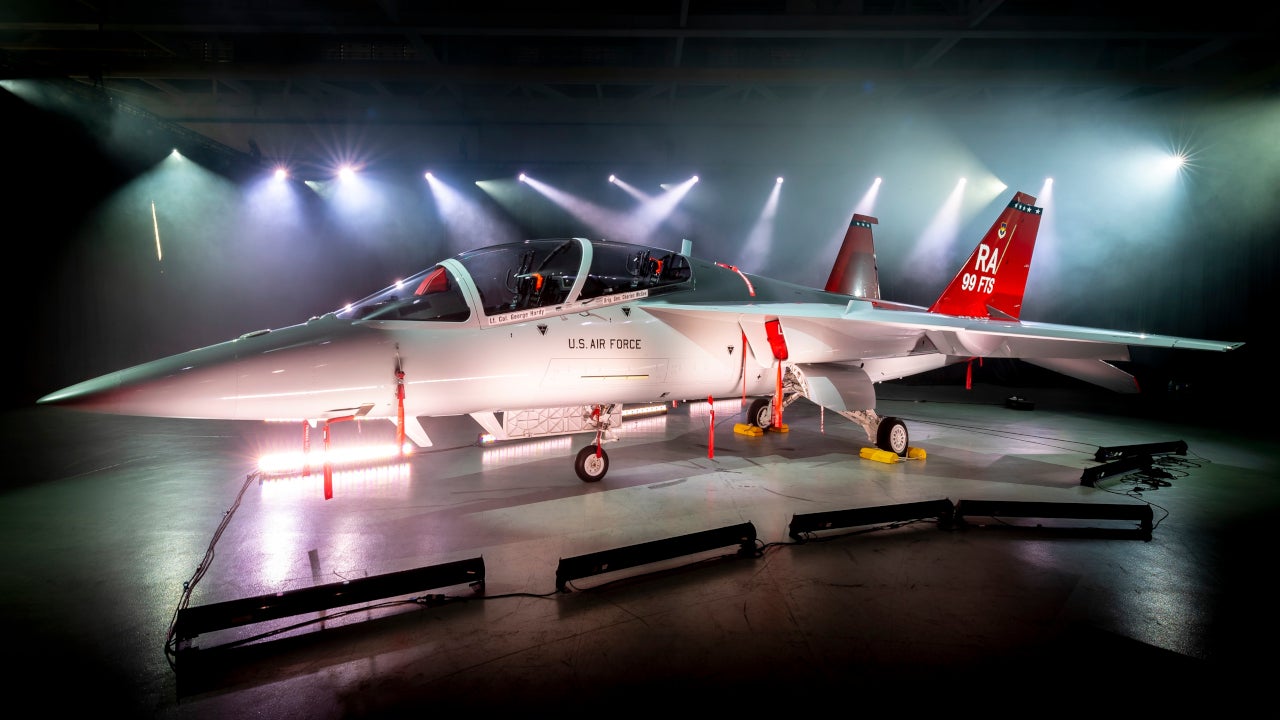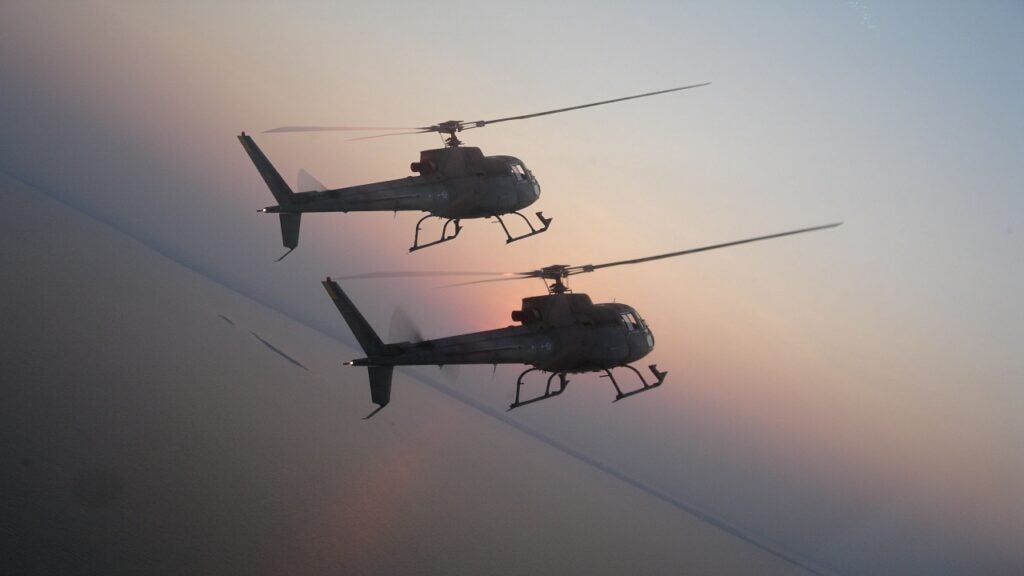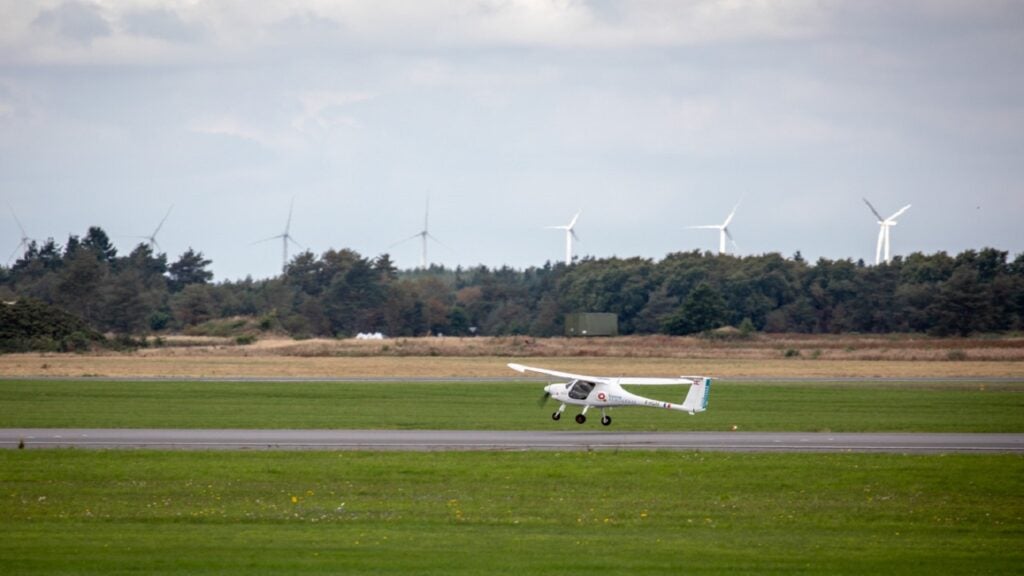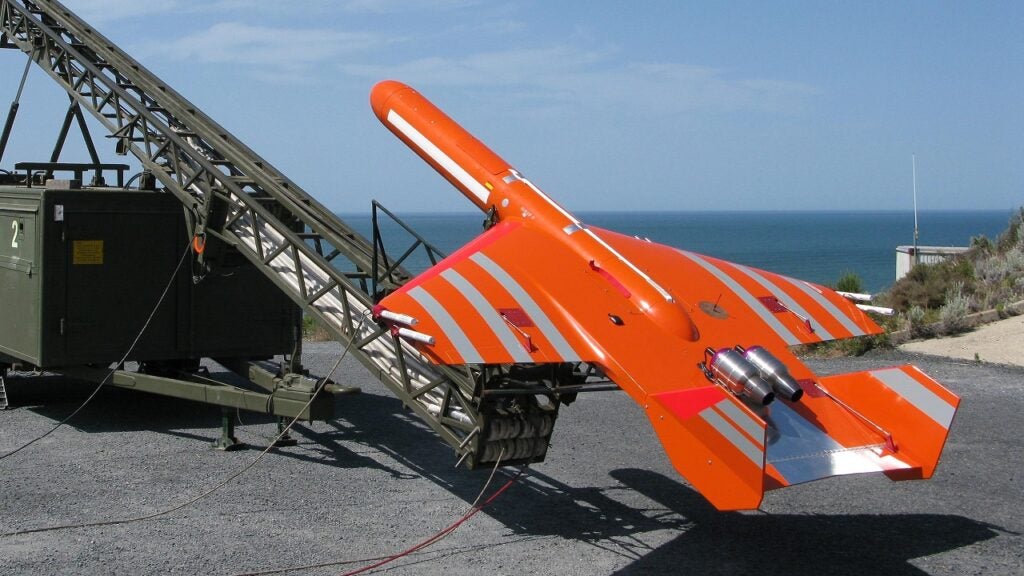
Boeing T-X aircraft, officially called the T-7A Red Hawk, is a new advanced pilot training system being offered by Boeing in partnership with Saab for the T-X advanced pilot training programme of the US Air Force (USAF).
The T-X aircraft is intended to replace the ageing T-38 Talon trainer fleet of the USAF.
Prime contractor Boeing entered a joint development agreement with Saab, the risk-sharing partner for the project, to develop an all-new aircraft design for the T-X programme in December 2013.
The first digitally designed T-7A Red Hawk aircraft, which will be delivered to the USAF, was rolled out of the production line in April 2022.
The aircraft moved from concept to first flight in just 36 months, using state-of-the-art design and manufacturing techniques. The use of model-based systems engineering and three dimensional (3D) tools improved the engineering quality by 75% and reduced assembly hours by 80% and software development and validation time by 50% when compared to traditional aircraft.
T-X programme details
The USAF unveiled the T-X programme requirements in March 2015, which was followed by the release of a draft request for proposals in July. The USAF plans to replace the T-38 aircraft with the new T-X aircraft.
Northrop Grumman-BAE Systems, Lockheed Martin-Korean Aerospace Industries (KAI), and Raytheon-Leonardo competed with the Boeing and Saab partnership for the T-X programme.
Raytheon / Leonardo offered M-346-based T-100 Integrated Training System (ITS) for the programme, while Lockheed Martin offered T-50A aircraft, a variant of the KAI T-50.
The USAF selected the Boeing T-X aircraft over its counterparts in September 2018, awarding a $9.2bn contract to Boeing for the delivery of 351 T-X aircraft, 46 simulators, and associated ground equipment in September 2018.
Boeing awarded a contract worth $117.6m to Saab to carry out the engineering, manufacturing and development (EMD) of the trainer aircraft in October 2018.
T-7A Red Hawk development details
The first two production-ready T-X aircraft were unveiled by Boeing and Saab in St Louis, Missouri, in September 2016. The first aircraft completed its maiden flight in December 2016, while the second made its first flight in April 2017.
The first engineering and manufacturing development (EMD) flight test of the T-X aircraft took place in July 2019, while the 100th flight was performed in August the same year.
In September 2019, the T-X aircraft was officially named T-7A Red Hawk by the USAF to honour the Tuskegee airmen who flew red tailed P-51 Mustangs during World War II.
The aircraft was designed, built, and tested on a digital foundation as part of the USAF’s digital eSeries initiative announced in 2020.
Boeing started the production of the ground-based training simulators, including the T-7A weapons systems trainers, and an operational flight trainer at its St Louis site in December 2020.
The company received the last of five fully installed EMD phase aft fuselages for the T-7A Red Hawk from Saab on 16 June 2022.
The first T-7A Red Hawk is expected to be delivered to the USAF in 2023 and will enter service in 2024. More than 1,000 pilots are expected to be trained in T-7A Red Hawk every year.
Boeing T-X Trainer design details
Boeing T-X has a clean-sheet design, with an airframe that comprises 144 doors and panels, a single engine, twin red tails, advanced cockpit stadium seating, embedded training instrumentation, slats and big root extensions that enable deft handling at low speeds.
In terms of appearance, experience and performance, the T-X matches the fighter aircraft. The twin-tail design resembles the design of current and future fighters and guarantees better stability, superior control, inbuilt speed break functionality, and safer in-flight refuelling.
Its maintenance-friendly design supports long-term functionality, allows for the integration of the latest technology and equipment and ensures that the maintenance crew can easily access critical items.
The key maintenance-friendly features, including high wing, drop down panels and doors for easy access, single point refuelling, fast engine changes, quick release panels, and interchangeable parts reduce the time required for aircraft maintenance and repair.
The aircraft serves as a more affordable and flexible platform when compared with the existing aircraft in its class. The system also supports technological evolutions to meet the requirements of future training needs.
Featuring a comprehensive, advanced training solution, the T-X trainer aircraft offers highly realistic simulation, computer-based training modules, and adaptive training. It also provides a complete suite of instructor tools to support a wide range of training needs.
It is also compatible with the common USAF ground equipment and uses established component providers to cut down supply chain complexity.
The training aircraft will also be able to receive software updates in future through ‘one push’ software updates.
Ground-based training system details
GBTS offers ‘real-as-it-gets’ simulation to pilots for a real-world experience. The training simulators are fitted with high-fidelity crew stations with dynamic motion seats and the Boeing Constant Resolution Visual System’s 8K native projectors, which provide the highest resolution, 16 times the traditional high-definition video (1080p) clarity.
The operational flight trainer and weapon systems simulators can digitally connect to the aircraft and offer live virtual constructive and embedded training scenarios to the training pilots for more accurate and immersive training.
Cockpit and avionics
A modern, fighter-like cockpit, equipped with flexible avionics, is integrated into the trainer. The cockpit features a modular large area touchscreen display, better visibility, and upfront controller display, offering a range of training options for both instructors and students.
The stadium seating layout of the aircraft houses an instructor and a student. The seating arrangement offers an ideal position for the instructor and visibility to perform basic traffic pattern operations and advanced visual air combat training.
The JPATS 1-7-compliant seating also accommodates a range of individuals of different body sizes.
The cockpit is equipped with open architecture software and fly-by-wire flight controls ensuring excellent handling at all speeds, flight parameters, and high angle-of-attack.
The aircraft is equipped with Orbit Communication Systems’ Orion™ audio management system (AMS).
Boeing T-X engine
The T-X aircraft is powered by a GE F404-GE-103 engine, offering higher power, improved fuel efficiency and superior mission capability.
A trainer crew turned off the GE F404 engine mid-air at an altitude of 20,000ft, flew for 48 seconds, and then restarted it to test the reliability of the engine, in February 2020.
Advanced features of T-7A Red Hawk training system
T-7A Red Hawk is expected to be used to prepare pilots to fly fifth-generation fighter aircraft. It will provide advanced capabilities including high angle-of-attack flight, high gravity environment, as well as sensor and information management. The aircraft can also carry out operations at night.
Contractors involved
TriMas Aerospace’s RSA Engineered Products (RSA) business received a contract to provide components used in fluid conveyance applications, particularly within the air ducting system, for the T-7A Red Hawk training system, in June 2022.
Boeing selected Rossell Techsys, the Aerospace and Defense (A&D) division of Rossell India, to manufacture and supply wire harnesses for the T-7A in February 2022.
Rohde & Schwarz, an international technology group, is providing the R&S MR6000R software defined, multiband-capable airborne transceivers for the trainer aircraft.



